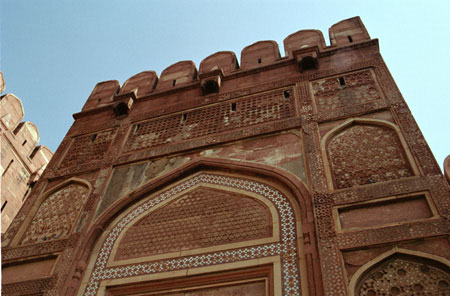
Agra Fort was built by Akbar, and made into a palace by his grandson Shah Jahan (the builder of the Taj Mahal). Shah Jahan was later imprisoned there by his son Aurangzeb, who deposed him in 1658.
Our guide said that the three spouts at the top were for pouring boiling oil on approaching enemies. They sure knew how to live in those days!

Overlooks a garden. The same guide said that the basement (under the patio) was a "chill out" room for wayward concubines.
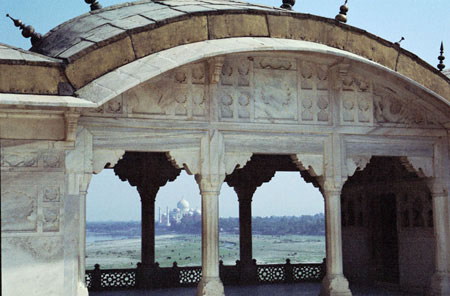
Attached to the Khas Mahal, with you-know-what in the background. Sorry not to have got more of the spiked roof – it's very 1930's.
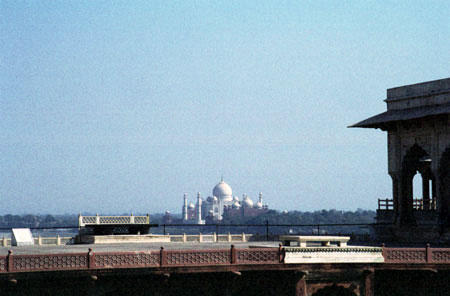
With you-know-what in the background. The terrace has two marble thrones: one for the emperor and one for the prime minister. The Diwan-i-Khas, or Private Audience hall (on the right) was a reception hall for kings, ambassadors and nobles.
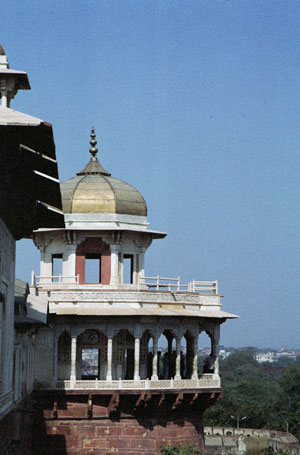
On the side of the fort. Legend has it that Shah Jahan died here (from slow poison), gazing at the Taj. (Thanks again to our guide!)
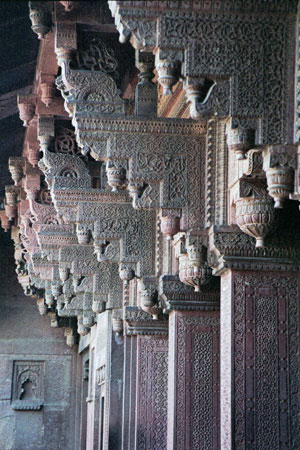
Actually, carved stone pillars on the Jehangiri Mahal.
Jehangir was Akbar's son. The palace was
built between 1565 and 1569.
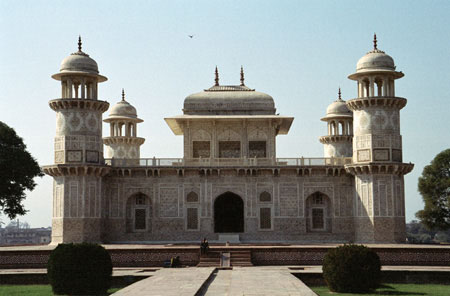
This is the tomb of Mirza Ghiyas Beg, Jehanghir's chief minister. It was constructed between 1622 and 1628.
On the other side of the Yamuna river from the Taj Mahal and pre-dating it by 3 years, this is said to be an early inspiration. It's known as the "Baby Taj."

The building is perfectly symmetrical, which is good, since the afternoon sun was in the wrong place for seeing the details in the front. The stone carving is utterly opulent.
And because it was afternoon and everyone else was off gawking at the Taj Mahal, the place was almost peaceful.